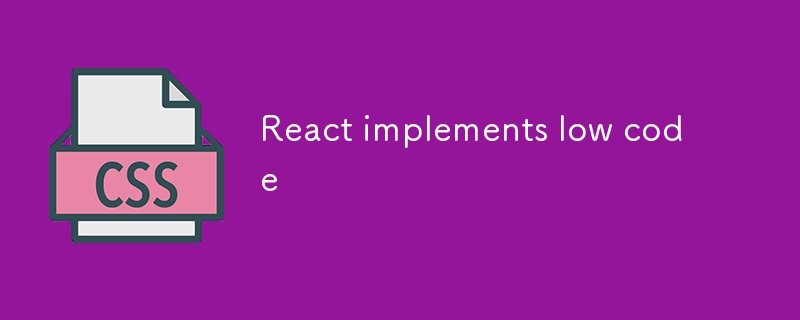React's suitability for low-code development is explored, emphasizing its declarative programming, component-based architecture, and hot reloading. While offering benefits like fast development and ease of learning, React faces limitations in complex

React Low-Code Implementation
How can React be used to create low-code applications?
React is a declarative, component-based JavaScript library that is well-suited for creating low-code applications. Low-code development platforms allow non-developers to create custom applications with minimal coding. React provides the following features that make it suitable for low-code development:
-
Declarative programming: React uses a declarative programming style, which means that you describe what your application should look like, rather than how it should be created. This makes it much easier for non-developers to build applications.
-
Component-based architecture: React applications are built from reusable components. This makes it easy to create complex applications by combining smaller, simpler components.
-
Hot reloading: React provides hot reloading, which allows you to see your changes in the browser as you make them. This speeds up the development process and makes it easier to experiment with different ideas.
What are the benefits and limitations of using React for low-code development?
Benefits:
-
Fast development: React's declarative programming style and component-based architecture make it possible to create applications quickly.
-
Easy to learn: React is a relatively easy language to learn, making it a good choice for non-developers.
-
Wide range of tools and resources: There are many tools and resources available for React, including tutorials, examples, and libraries.
Limitations:
-
Can be complex: React applications can become complex, especially for those who are not familiar with JavaScript.
-
Not as powerful as native code: Applications created with React are not as powerful as native code applications.
-
Limited support for offline operations: React applications require a stable internet connection to work.
How to optimize React applications for low-code use cases?
There are a few things you can do to optimize React applications for low-code use cases:
-
Use simple components: Use simple, reusable components to build your applications. This will make it easier for non-developers to understand and use your applications.
-
Use declarative programming: Use declarative programming as much as possible. This will make your applications easier to understand and maintain.
-
Use code templates: Create code templates that non-developers can use to quickly create new applications.
-
Provide extensive documentation: Provide detailed documentation for your applications. This will help non-developers use your applications effectively.
The above is the detailed content of React implements low code. For more information, please follow other related articles on the PHP Chinese website!






